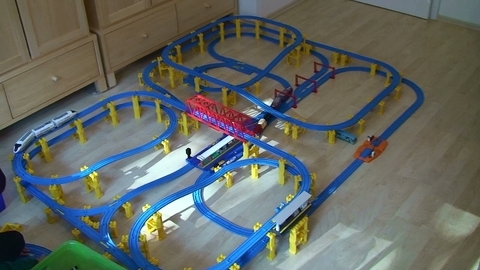 Among the symptoms that can scare parents, we single out apnea, when the child stops breathing temporarily during sleep, as well as constant nasal congestion. There are 3 degrees of proliferation of the lymphoid tissue of the pharyngeal tonsil:
Among the symptoms that can scare parents, we single out apnea, when the child stops breathing temporarily during sleep, as well as constant nasal congestion. There are 3 degrees of proliferation of the lymphoid tissue of the pharyngeal tonsil:
- for the first degree, the overlap of the openings between the nasal passages and the pharynx by a third is characteristic, because of which the child can snore at night and often have a cold;
- on the second, the lumen is closed by half, which is manifested by difficulty in nasal breathing. In a child, you can notice apathy, inattention and moodiness due to poor sleep;
- at the third, almost complete closure of the lumen occurs. In this case, the child does not breathe through the nose, and the face becomes "typical" for this disease (adenoid face).
To determine the degree of proliferation of lymphoid tissue, an X-ray examination of the nasopharynx and paranasal sinuses is performed, as well as an endoscopic examination of the adenoids.
Indications and types of operations
In most cases, when detecting grade 3 adenoids, their removal is recommended, but this applies to the complicated course of the pathology. First, the doctor suggests dealing with the adenoids with medication and laser therapy.
The properties of the beam allow you to reduce tissue swelling and fight microbes. As a result, parents may notice an improvement in nasal breathing in a child due to a decrease in the volume of the amygdala. The child sleeps well at night, does not snore, which undoubtedly pleases the parents.
Surgical removal of adenoids in children can be performed:
- endoscopically, when the surgeon has the ability to control his actions through the video endoscope. Endoscopic adenotomy is projected onto a screen connected to an optical device;
- you can remove adenoids in a child with a laser. Cauterization of hypertrophied tonsil tissue occurs due to the high power of the laser beam. In one procedure, it is possible to relieve the child of painful symptoms and restore nasal breathing;
- classic excision of adenoids in children involves the use of a special knife - an adenotome, which excises hyperplastic tissue. The disadvantage of the method is the high risk of relapse, because blindly it is not always possible to completely remove the amygdala.
Lymphoid tissue should be removed if the child suffers from frequent colds, chronic otitis media, sinusitis, or tonsillitis.
Difficulty nasal breathing leads to the fact that the child does not sleep well at night, is capricious in the morning, and walks sleepy and inattentive during the day. These children have declines in school performance. The periods of apnea are especially scary, when the parents' heart stops, when they notice that the child is not breathing.
When removing adenoids in children, it must be remembered that the operation is not performed for colds, chickenpox, in the first month after vaccination, for oncopathology, allergies or blood diseases, when coagulation is impaired.
Types of anesthesia
Recently, surgery has been performed under general anesthesia. This tactic is due to the many shortcomings of local anesthesia. When anesthesia is performed only in the area of operation, the psycho-emotional state of the child is not protected, so there is a high risk of screaming, crying and fear. Children in such situations begin to break free, which complicates the work of the surgeon.
The anxiety of the little patient not only interferes with the high-quality removal of the tonsil, but also frightens the parents very much. Although local anesthesia relieves soreness, the sight of blood and instruments leaves children in shock. For the child's peace of mind, sedatives can be preliminarily administered intramuscularly, but this does not always help and does not restrict movement.
Of course, surgery under general anesthesia has its own risks, especially for allergy sufferers, asthmatics and neurological diseases. However, modern approaches and a variety of drugs for anesthesia enable the anesthesiologist to make the right choice in favor of a particular medication, which will practically reduce the risk of allergies to zero.
Surgery under general anesthesia has several advantages:
- immobilization and calmness of the patient allows the surgeon to accurately perform the removal of the tonsil without leaving pieces of tissue. This reduces the likelihood of relapse;
- the risk of bleeding is reduced, because nothing interferes with the actions of the surgeon, therefore the blood vessels
 are not accidentally injured due to snatching the child from the hands of staff;
are not accidentally injured due to snatching the child from the hands of staff; - the absence of negative and terrible memories in children about the operation;
- absolute painlessness;
- no risk of aspiration when blood enters the respiratory tract. Because of this, bronchospasm and asphyxia develop;
- less risk of bleeding compared to local anesthesia;
- a full-fledged tamponade, which is not always possible to effectively carry out with insufficient patient sedation.
General anesthesia is preferred over local anesthesia for children.
Anesthesia during the removal of adenoids is often used endotracheal, when "sleeping pills" are injected directly into the trachea. The child falls asleep smoothly and wakes up after the end of the adenotomy. The duration of anesthesia does not exceed 20 minutes. In the postoperative period, the patient may be disturbed by drowsiness, lethargy, and sometimes nausea.
Especially performing adenotomy
There are various methods for removing adenoids in children, the choice of which is carried out by the surgeon based on the result of diagnosis and the lability of the patient's psychoemotional state. Surgery to remove adenoids in children can be performed on an outpatient basis or after the child is hospitalized. This issue is resolved individually, taking into account the wishes of the parents and the characteristics of the operation.
On the eve of the surgical intervention, starting from 19:00, it is forbidden to feed and water the child. A full stomach can cause gastric contents to enter the trachea. Aspiration is considered a severe complication that can lead to death.
The task of parents on the eve of adenotomy is to calm the child. It is advisable to promise to buy something for the child in order to slightly smooth out the unpleasant sensations from the operation. It is not worth telling in detail what will be carried out, even if the child persistently questions.
In addition, a few days before the intervention, parents should measure the temperature and monitor the general condition of the child. He must play actively, eat with good appetite, otherwise respiratory illness can be suspected.
If the child has a fever, he has become lethargic, drowsy and moody, you should tell the doctor about this. In this case, the operation is postponed to another day.
To prevent this, relieving the child of repeated stress, you need to be careful and avoid communication with sick people.
Taking into account the methods of removing adenoids in children, the access and the technique of execution are somewhat different:
- endoscopic removal of adenoids in children is considered the most modern and less traumatic operation.Initially, the child falls asleep after the administration of drugs for anesthesia. Then the surgeon inserts a special instrument (endoscope) into the nasal passage and advances it until a complete picture of the condition of the adenoids is obtained. Having examined the lymphoid growths, the doctor determines the scope of the intervention and the sequence of its implementation. Using a radiofrequency knife or scalpel, the hyperplastic tissue is excised. After removal, a re-examination of the operating field is performed to make sure that the tonsil is completely removed. If a piece of altered tissue remains, there is a risk of re-proliferation of the lymphoid formation. Hemostasis (stopping bleeding) is also performed by cauterizing damaged blood vessels. The advantage of the method is minimal trauma and high efficiency. The disadvantage is the lack of the necessary equipment in many clinics and the skills of doctors working with an endoscopic instrument. Endoscopy is often performed in large hospitals and private clinics. One of the types of endoscopy is coblation, the action of which is aimed at destroying tissues with cold plasma. The technique has a high cost;
- laser exposure does not require general anesthesia, since the manipulation is characterized by minimal soreness and absence of bleeding. In some cases, a combination of traditional removal with laser therapy is used. First, the surgeon removes lymphoid growths using an adenotome, after which the tissue is cauterized with a laser beam;
- the simplest is the classic method of removing the tonsil. A special laryngeal mirror is used to examine the adenoids. It raises the uvula, as well as the soft palate, visualizing adenoid growths. Then the lymphoid tissue is excised, followed by cauterization of the bleeding blood vessels. Bleeding is stopped by tamponade or the use of hemostatic agents. The disadvantage of this technique is insufficient examination of the adenoids, so the doctor may not completely remove the vegetation, leaving pieces of hypertrophied tissue. In the future, they can cause the reappearance of adenoids.
When adenoids are removed from children, the operation lasts no more than 15 minutes. In the postoperative period, the patient is under medical supervision for 4-5 hours. In the absence of complications, the child can be allowed to go home with their parents. In this case, the responsibility for the child's condition rests with the parents, therefore, close supervision is required from them.
Postoperative period
We have analyzed how adenoids are removed in children. Now a few words about the course of the postoperative period. Knowing its features, parents will not panic over trifles, and if necessary, they will consult a doctor in a timely manner.
| What can be home treatment | Complications requiring medical advice |
|---|---|
| Subfebrile hyperthermia, on the first day - an increase in temperature up to 38 degrees. Treatment involves drinking plenty of fluids, nurofen syrup, efferalgan suppositories, and antipyretics without acetylsalicylic acid. | The temperature is above 38-39 degrees, which persists for more than 3 days. |
| Discomfort, pain when swallowing. Treatment: irrigation of the oropharynx with a local anesthetic spray. | Severe pain in the nasopharynx. |
| Crusts of blood and mucus streaked with blood. | Discharge of blood in clots or drops from the nose, spitting out blood from the throat. |
| Nasal congestion for 10 days. Treatment: nasal drops, sprays with a vasoconstrictor effect (vibrocil, otrivin), a healing effect (protargol), antihistamines (claritin, suprastin). | Complete absence of nasal breathing for more than two weeks, despite the use of vasoconstrictor nasal drops. |
| Slight malaise on the first day after surgery. | Severe weakness that persists for 2-3 days. |

 are not accidentally injured due to snatching the child from the hands of staff;
are not accidentally injured due to snatching the child from the hands of staff;

